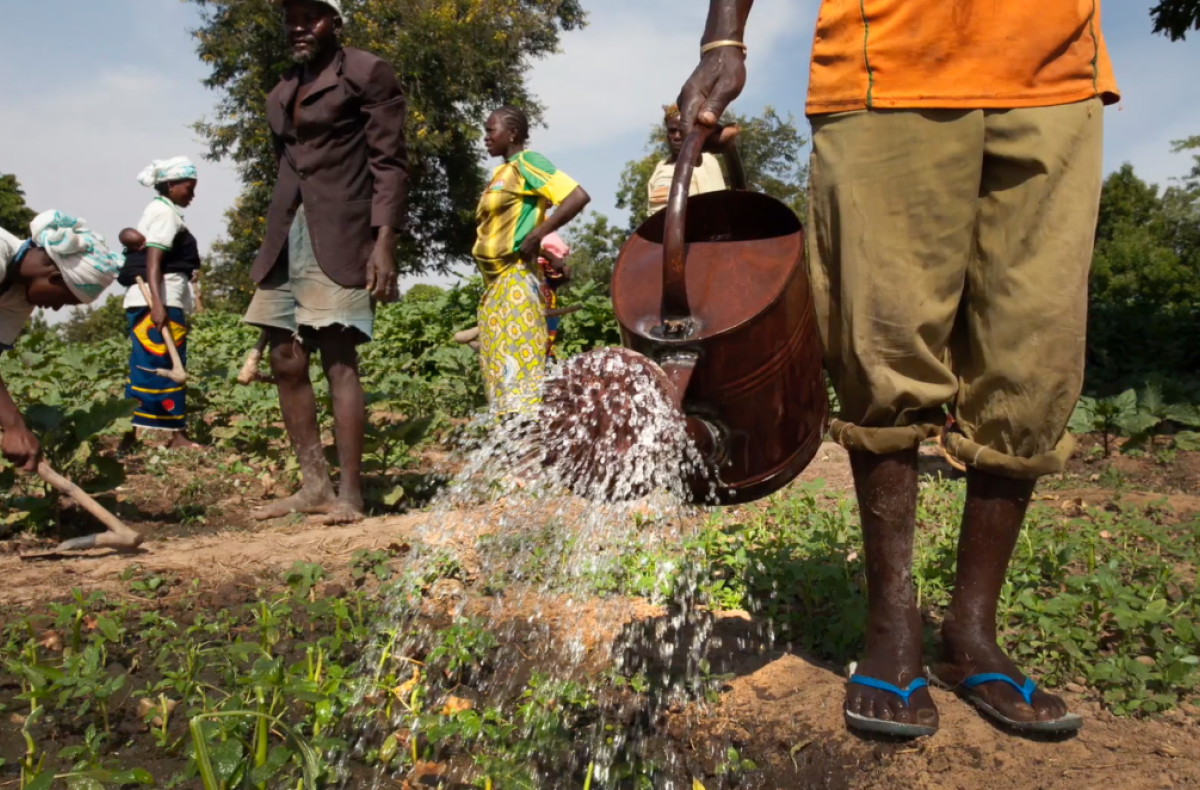Escaping extreme poverty
Stanford environmental engineer Christine Pu discusses how infrastructure investments and policies can alleviate poverty and build resilience against climate change
October 27, 2021

In sub-Saharan Africa, rising temperatures and reduced rainfall jeopardize the livelihoods of rural households that rely on subsistence agriculture. Roads and irrigation systems could lessen these climate change-related impacts and help households escape poverty by connecting people to places of commerce and making farming easier, less risky and more productive. Researchers at Stanford’s Program on Water, Health and Development are studying how the lowest-income households in the region use infrastructure so that future investments can be designed more effectively to reduce poverty.
Christine Pu, a Stanford Ph.D. student in environmental engineering and sciences, helps lead the Extreme Poverty, Infrastructure and Climate Initiative. Below, Pu discusses the scope of the project, how infrastructure benefits household wellbeing, and how the project’s unique approach to defining poverty shapes the way it evaluates infrastructure.
Why is it important to study the intersection of extreme poverty, infrastructure, and climate change?
Many international development efforts focus on building physical assets such as roads and irrigation systems. We often assume that these physical assets will help alleviate poverty. This project challenges that assumption. The actual mechanisms by which road and irrigation infrastructure impact poverty are not fully understood, especially in a changing climate. Furthermore, these infrastructural assets are not always accessible to low-income households; taking advantage of road and irrigation infrastructure often requires additional resources, such as capital, credit and land. I am interested in thinking about who benefits from infrastructure, who gets left behind, and how we can design infrastructure investments for more inclusive development.
How might this work illuminate the pathways out of extreme poverty in sub-Saharan Africa?
Studies in this space are often focused on quantifying how much access to road and irrigation infrastructure impacts household wellbeing in sub-Saharan Africa. By contrast, we want to focus on the causal mechanisms by which infrastructure impacts household poverty and the conditions under which these mechanisms are actualized. These insights can help us understand the role that infrastructure plays in helping households escape poverty, as well as the household, regional and project characteristics that amplify or dampen the poverty-alleviating impacts of these investments.
Why is it important to understand how infrastructure impacts poverty alleviation?
The benefits of road and irrigation infrastructure are not always evenly distributed; those living in poverty are often left behind. Understanding how infrastructure impacts poverty alleviation can inform public policies to ensure that infrastructure investments alleviate inequity instead of exacerbating it. Such insights are also important for adapting existing and new infrastructure investments to changing climate patterns. With more granular evidence about how infrastructure impacts household wellbeing, we can identify the types and features of infrastructure investments that benefit low-income households, given expected changes in temperature and precipitation.
How do you challenge and rethink definitions of poverty here?
Most studies focus only on household income as an indicator of poverty. This approach follows the international poverty line definition, which states that individuals living on less than US$1.90 a day are in “extreme poverty.” However, this indicator only captures one dimension of poverty. To capture the non-monetary facets of poverty in this project, we are using a complementary definition of poverty that will incorporate local lived experiences. We will also be treating poverty as a dynamic phenomenon. Instead of focusing on the number of households that live below the poverty line in a single point in time, we are focusing on the number of households that move above and below the poverty line across time. This approach focuses on the nuanced differences between the reasons for poverty escapes and poverty descents.
How do you hope this work will be applied to help address extreme poverty?
I hope this work inspires a more constructive conversation about the types and features of infrastructure that are most beneficial for households living below the poverty line. I hope that decision-makers will use our findings to develop necessary policies that complement infrastructure investments to ensure they do not bypass the lowest-income households. And I hope that this work will contribute to ongoing conversations about how poverty is defined, including considerations around who gets to define poverty.
Contact Information
Rob Jordan
Associate Editor, Environment and Sustainability, Woods Institute
rjordan@stanford.edu


